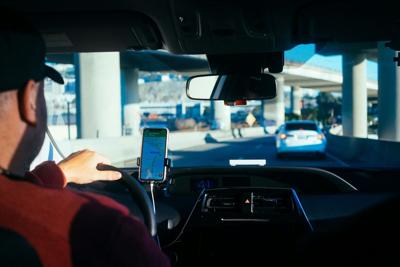In a strategic reversal reported by the Wall Street Journal, Uber and Lyft are making a significant shift in their business strategy by partnering with autonomous vehicle operators, despite abandoning their own driverless car development programs years ago. Both companies are now preparing to integrate driverless taxis into their services, with new app features allowing customers to control various vehicle functions through their phones.
The Wall Street Journal highlights that in the coming months, riders in Austin and Atlanta will have access to Waymo's driverless cars through the Uber app, while Lyft plans to introduce May Mobility's autonomous taxis in Atlanta. The publication details how both companies are investing in infrastructure to support these fleets, including storage facilities, charging stations, and high-speed Internet connections. Market research cited in the article shows Waymo's growing impact in San Francisco, where it has captured a 22 percent market share in its operating zones. This development has affected both Uber and Lyft's market position, though both companies maintain their overall bookings continue to grow.
The report emphasizes that human drivers won't disappear immediately. Uber's CEO told the WSJ it might take ten years before half of U.S. trips use self-driving cars. The technology still faces limitations in dense urban areas and challenging weather conditions. Meanwhile, other major players are making moves in this space, with Tesla planning to launch its Cybercop before 2027, while GM has ended its Cruise self-driving program.
Another story, also by the Wall Street Journal, reveals growing customer acceptance of autonomous vehicles, with Waymo's passenger count in California jumping from 20,000 to 500,000 in one year. Both ride-hailing companies are actively preparing for this shift, with Uber developing remote horn-honking features and scouting locations for autonomous vehicle depots. Similarly, Lyft is converting its car-rental locations into driverless taxi hubs and training AI to assist riders.
However, this transition is causing concern among human drivers. An article by Business Insider describes how some drivers, like those in the San Francisco Bay Area, are already feeling the impact, with some being forced to focus on airport routes, where driverless taxis cannot yet operate. This pressure on human drivers might increase as more autonomous vehicles enter the market, including potential future entries from companies like Tesla.






(0) comments
Welcome to the discussion.
Log In
Keep it Clean. Please avoid obscene, vulgar, lewd, racist or sexually-oriented language.
PLEASE TURN OFF YOUR CAPS LOCK.
Don't Threaten. Threats of harming another person will not be tolerated.
Be Truthful. Don't knowingly lie about anyone or anything.
Be Nice. No racism, sexism or any sort of -ism that is degrading to another person.
Be Proactive. Use the 'Report' link on each comment to let us know of abusive posts.
Share with Us. We'd love to hear eyewitness accounts, the history behind an article.